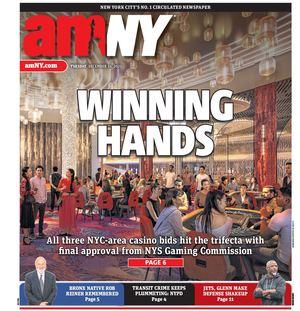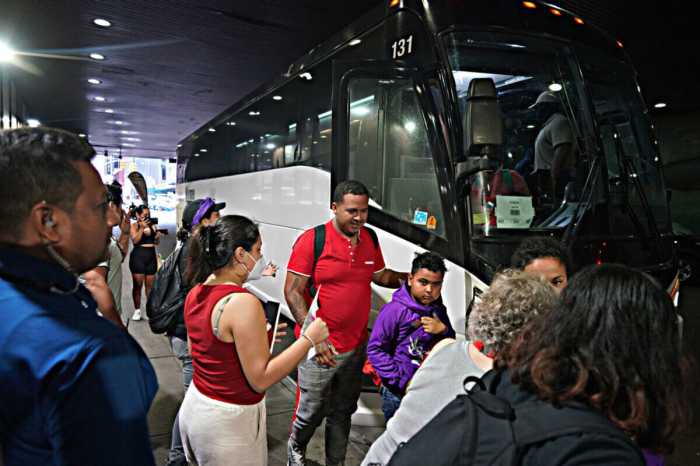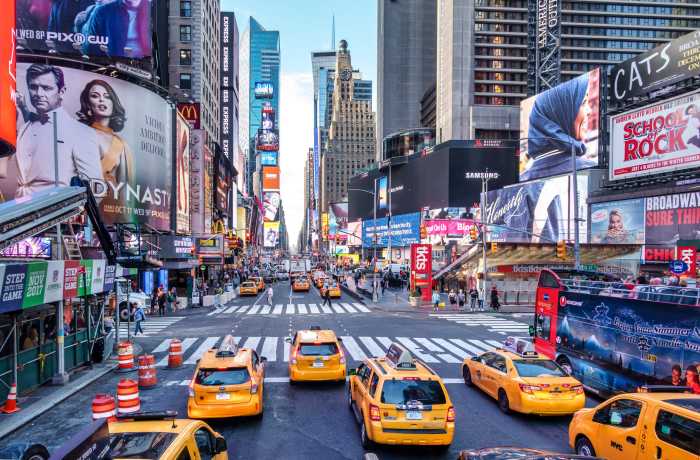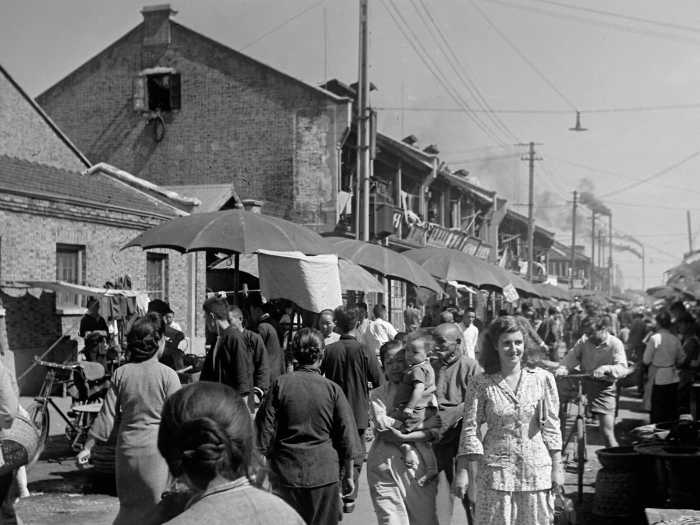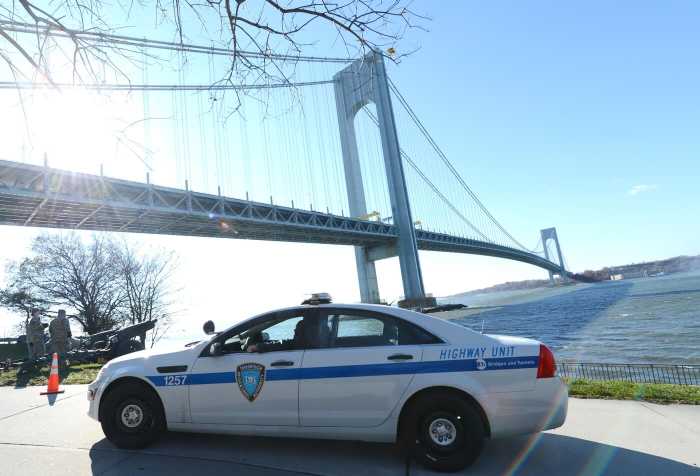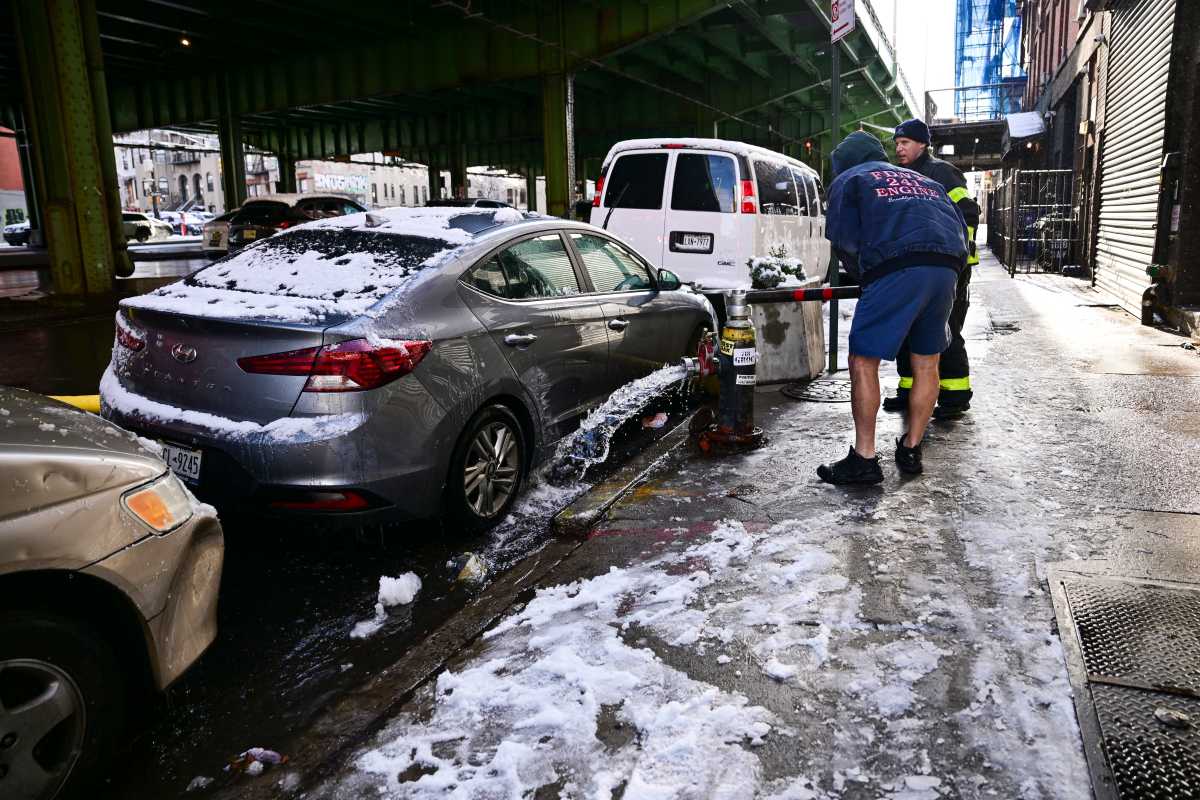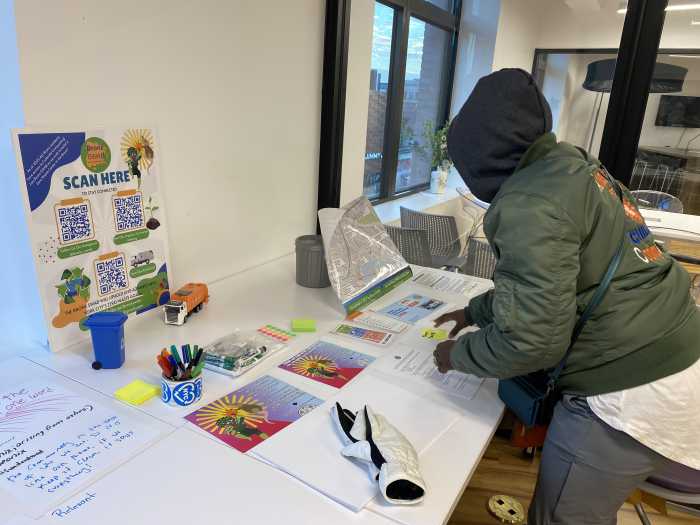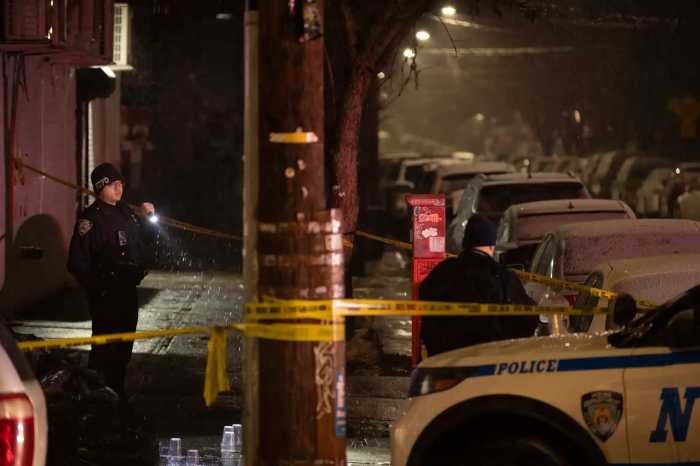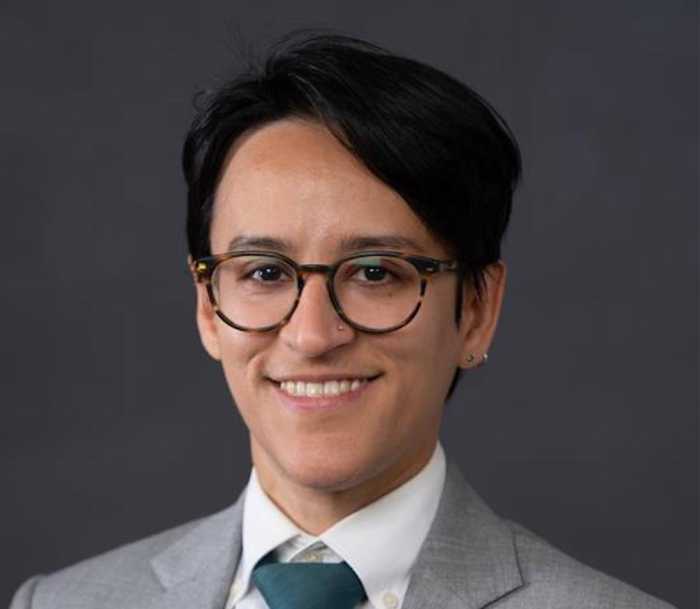amNewYork Metro sat down with Manhattan Borough President Mark Levine on May 19 to catch up on several topics: his proposal for the future of the world’s most famous arena, Madison Square Garden, congestion pricing, and the migrant crisis and its intersection with education in New York City.
amNewYork Metro: I think it’d be great to start off with your proposal for MSG. What’s the latest on that front?
Levine: Penn Station, the busiest rail hub in North America, is cramped and rundown and really soulless. There’s been plans proposed for decades about how to turn it once again into the grand train station that it could and should be. A lot of those plans have depended on moving MSG. But here we are in 2023, and we still have MSG there and still have a really substandard Penn Station. While it’s possible, MSG could move someday, the truth is, we can build a great Penn Station now. It’s going to require the railroads and MSG coming together to put in place what I think could be a transformative plan for this station: Creating a new mid-block entrance between the arena and to Penn (Station), creating a grand new entrance on Eighth Avenue that would be possible if you knocked down the MSG theater, creating a double height concourse underneath, activating the streetscape with retail and other uses — we can do all those things. We have some leverage to make sure it happens now, because MSG’s special operating permit is about to expire.
As borough president, I get to weigh in on approval of a new permit. I’m recommending: a permit with the time period of 5 years, which I believe is enough time to get a plan to transform Penn Station together (and) to bring agreement between MSG and the railroads. MSG is going to have to give up some things to make this work. But it’s in the interest of the city to have a great rail hub there. I think we have really a unique window of opportunity now, not only because of the special permit coming to, but because we have allies in Washington right now that have committed to helping to fund a new Penn Station. Those allies might not be in control in two years. I’m calling for action now: a vision of a grand Penn Station (and) a short-term permit for MSG to ensure we get it done. I’m really excited about the possibility.
amNewYork Metro: Where are other places where you think MSG could be moved to?
Levine: I don’t think there’s been a viable alternative site on the table of late — a site that has community support, a willing property owner, and good mass transit. Not that one would never be possible, but in the immediate term, I just don’t think there’s a viable plan. There’s also the obstacle of the costs that would be involved in moving and building a new arena. I think a lot of us would object to public money being used for that when we have so many other needs. So, in the absence of an immediate, obvious, viable plan to move MSG, my position is: let’s go as big as possible on creating a world class Penn Station, next to, underneath, (and) around the arena.
amNewYork Metro: What kind of pushback do you see as a result of your proposal?
Levine: Well, this is such a complicated issue because you have four or five parties on the property. You have MSG, the MTA, Amtrak, the New Jersey Transit, and vibrant neighbors, people who have an emotional attachment to MSG, and people who are still resentful of the fact that we destroyed a grand train station in the early 60s to build an arena on top. There are a lot of strong emotions on this.
We’re not going to solve every problem now and not meet everyone’s demand now, but I think that we can put in place a plan that would dramatically improve the experience for train passengers. That, to me, is my top priority. I do actually believe we can do it and get a plan in place now and not lose another decade or two in limbo.
amNewYork Metro: How much would your current plan and proposal cost roughly?
Levine: The MTA has calculated that some of the train station renovations proposed come to about $7 billion. But that doesn’t account for a grand Eighth Avenue entrance. I’m hoping that in the weeks and months ahead, we’ll know more about the exact cost of those things.
We don’t have all the answers now on things, like cost. We don’t have detailed plans yet. We know enough to know that a grand train station can be built, even under the constraints of MSG not yet moving.
amNewYork Metro: Moving on to the next topic here: congestion pricing. What is the latest on the Central Business District Tolling Program?
Levine: This has been a more than decade-long process to deal with two really mounting crises in in Manhattan and in the region. One is just a horrific level of congestion in midtown and downtown that’s a drag on our economy. It has terrible impact on our environment (and) air quality. It impacts our physical safety. It’s slowing down buses, it’s slowing down emergency vehicle response times, ambulances, firefighters and police response. All because of just this intense congestion in the central business district.
But there’s a second crisis: which is that we don’t have funds to invest in our mass transit the way we need to, to invest in updating stations with elevator access, to invest in more modern train cars (and) updated signaling systems to prevent delays, more modern buses or electric buses.
Congestion pricing helps us solve both of those crises, because it will reduce congestion, which will have a lot of benefits for our economy or environment or health, and will also create a sustaining funding stream for the kind of real investment in mass transit that we need in New York. Just in the last week or so we passed a major milestone. The federal government has issued a finding that it’s called a “finding of no significant impact.” That’s a finding that establishes the fact that this plan would not have environmental harm. It was a key step to approval from the federal government for this plan.
That now kicks off a series of events that could culminate in the program being implemented in the middle of 2024. There’s still a lot of questions to ask to answer about how the fees will be structured and questions of exemptions and variable fees between peak and off peak, et cetera. We have more work to do to ensure that the program is designed right. But we’ve passed a major milestone and it seems we have more momentum than ever to get this done in the next year.
amNewYork Metro: Last Friday, the MTA released a plan to toll taxi drivers and for-hire drivers only once a day. There could be potential discounts to low-income drivers, and discounts for drivers coming in overnight. Could that be a hint as to whom might be exempt from the toll?
Levine: I support all of those ideas. I think that what they established is a floor. They said that the charge for overnight hours can be at most half of daytime peak charge. In theory, I think it could be even less than that. But they want to make sure that there’s at least a 50% differential, because you do want people to have the option to shift travel to off hours.
The same with the taxi industry, particularly the yellow cabs who have been so beleaguered in the last decade. I support anything that support the yellows. I guess this means that at most, they can be charged once a day — perhaps they can even be not charged at all. But there’s still a lot of questions beyond that that need to be determined. But that was an important step forward in at least defining the parameters of how the charging will work.
amNewYork Metro: And what about our neighbors across the Hudson? In theory, New Jersey Governor Phil Murphy has said that he’s conceptually supportive of congestion pricing, but not when it’s double tolling New Jerseyans. What are your thoughts about that?
Levine: I’ve been kind of perplexed at the reaction from so many politicians in New Jersey, because I don’t remember ever hearing any of them holding press conferences against the toll on the New Jersey Turnpike, or the Garden State Parkway, which by the way, they could get rid of that toll tomorrow. It’s also perplexing because far more people from northern Jersey, come to Manhattan daily via mass transit than via private car. It seems to me if you’re trying to fight for your constituents, what you’d want is more money for mass transit.
On the narrow question of double charging. I actually agree. I think that what you pay on on the Lincoln Tunnel, and maybe even the GW (George Washington) bridge should be deducted from what you’re paying on the congestion charge. That seems like something that there could be consensus around. I’m hoping that if that happens, then the the temperature drops and some of the objections from our friends in New Jersey recede.
In the meantime, I’m making the point that if you improve mass transit, it’s good for everybody, whether you’re in New York or New Jersey. If you improve congestion, it’s good for everybody, and if you’re helping the environment and saving the planet, then that’s good for for everyone. I think this is ultimately a big net win for the whole region.
amNewYork Metro: Speaking of an issue that you think could be better for everybody, New York City is the city where there’s something for everybody. It’s also a sanctuary city. So many immigrants and migrants have come in through New York City’s doors. Where are we right now on this migrant situation? Is it a crisis?
Levine: It’s a crisis. We have had something like 67,000 arrivals over the past year. We still have in the shelter system, now, approaching 40,000. It’s overwhelmed our shelter system. I’m actually really proud of how New York has embraced the migrants. That’s New York at its best — how we’ve welcomed them with open arms. It’s such a contrast to the way leaders in other parts of the country are demonizing them. But New York can’t do this alone. We need help. We need financial assistance, first and foremost, because of the cost of housing and feeding and providing all the services that these migrants need and deserve. I think we need the federal government to play more of a coordinating role in working out a national resettlement plan for people who are arriving.
As of now, the mayor’s team has indicated that they’re not going forward on stand-alone gyms. I think that really should be a last resort because of its impact on the opportunity for public school kids to have gym and play sports in their gym. I think that some of the rhetoric used to denounce the policy was really reprehensible in describing the presence of the migrants as this terrible danger to the kids. I don’t believe that’s fair or accurate. I’ve met a lot of migrant families. These are folks who want to work, they want to contribute. They have been through hellish conditions in their home country and a brutal trip here.
I’m absolutely confident they are going to be good for New York, as every other wave of arrivals has been. They need help in the short term, and I’m glad we’re providing it. This is a big challenge to manage.
amNewYork Metro: What are your thoughts on the Brooklyn Borough President’s suggestion about moving unhoused folks into vacant apartments to make room in those shelters for migrants and asylum seekers?
Levine: BP Reynoso is a friend and an amazing leader and someone who I really admire. Good for him for thinking creatively. Every idea needs to be on the table. It is a darn shame that in the midst of a broader housing affordability crisis, even beyond the migrant question, we have tens of thousands of empty apartments in the city. It’s just absolutely indefensible. I applaud him for thinking creatively how to tap that resource. I think all plans need to be explored at this time.
amNewYork Metro: What initiatives and support measures are in place to transition migrant youth to the city’s education system?
Levine: There are thousands of kids, maybe over 10,000 at this point. It’s a lot for the schools to manage, because it requires more bilingual staff than we have. These young people have really experienced trauma, so they need a lot of supportive services, counseling, etc. The school system has been losing students for the last few years, so in a sense, this is filling that gap.
It’s just a challenge to integrate people, especially mid-school year. More so, they’re non-English speakers, and have the obvious social and emotional challenges that these poor kids have. But I really applaud the teachers and the principals in the school communities and also a lot of parents who are stepping up. I have mostly heard pretty inspiring stories about how schools have absorbed these new students. But that is an expense, and a challenge for the city, and one more reason why we need federal help to make this work.
